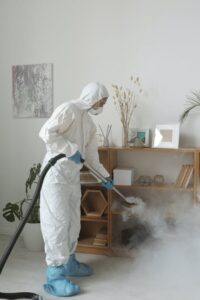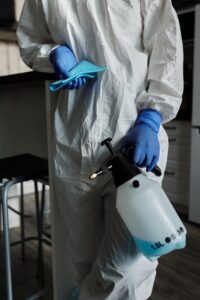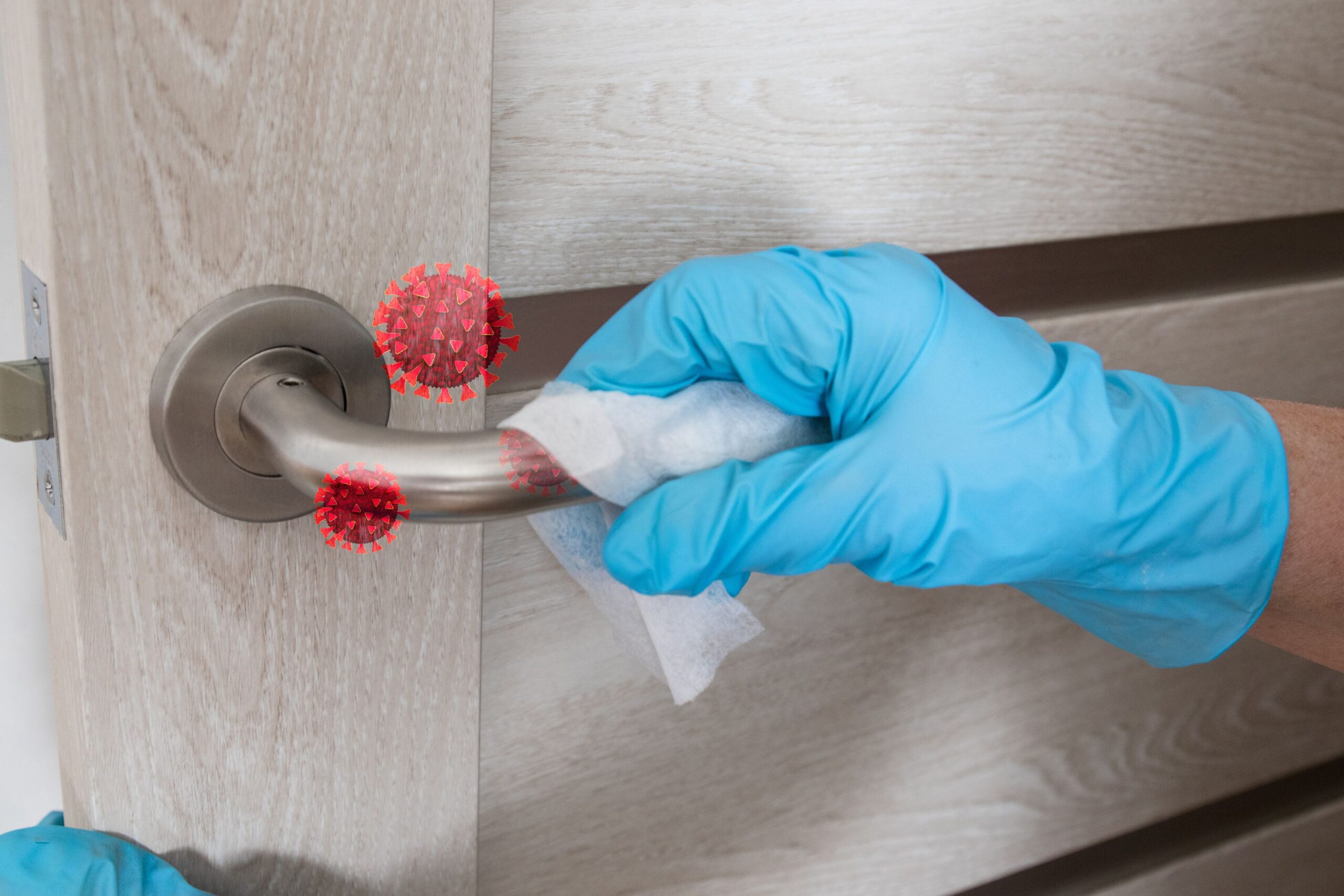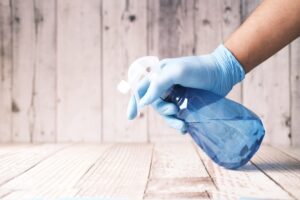How to Disinfect Surfaces
Things are not always as straightforward as they seem when surface disinfection. In part, this is because many individuals are unsure of which products to use and how to use them. It is especially important considering the need that most cleansers to stay in contact with surfaces for at least a minute after application. So, how to disinfect surfaces?
Disinfecting Variety of Surfaces in the Proper Manner
It is necessary to take preventative measures like wearing a mask and keeping a safe distance from other people. Also, wash your hands often with water and soap, and maintain a clean atmosphere at your home or workplace to prevent the spread of COVID-19. Individuals have started to return to their favorite shops in more significant numbers due to the reopening of cities. Although disease transmission is unlikely in places with high immunization rates, illness transmission is always dangerous. You must sterilize the surfaces to prevent the spread of this pandemic are many and varied in their requirements.
It is more likely that individuals will catch an illness when engaging in everyday activities rather than while they are doing anything unusual. After all, the concepts of cleanliness and hygiene are not inherently antagonistic.
An increase in the number of people vulnerable to infection contributes to the problem. It is vital to get public support to fight infectious illnesses economically viable and consistent way. On the other hand, general citizens can get accurate and timely information about their government as a fundamental right. It’s crucial to note a considerable distinction between dirt and contamination, which I believe is critical.
Difference Between Sanitizing, Cleaning, and Disinfecting
Cleaning
When you clean anything, you remove dirt and dust, crumbs, and germs from a surface or an item. When you clean, you will most likely use soap and water to clean the surfaces you have cleaned physically. It may or may not be effective in killing bacteria. However, since you have eliminated some of them, there are fewer germs that may infect you and spread sickness.
Disinfecting
Disinfection kills microorganisms on surfaces and objects by using chemicals (disinfectants). Bleach and alcohol solutions are two examples of common disinfectants. To effectively eliminate germs on surfaces, you must often keep the disinfectant on for an extended amount of time. Disinfection does not always result in the cleaning of unclean surfaces or the removal of germs.
Sanitizing
You might use cleaning, disinfection, or a combination of the two to sanitize an area. When you sanitize, you reduce the number of germs in the environment to a safe level. Public health organizations determine what constitutes a safe amount of exposure. For example, there are sanitization measures for restaurants and other food-preparation establishments.
According to your requirements, the sanitization method you choose will differ. You may be cleaning a floor using a mop, a chemical, and water. To sterilize the dishes, you can consider using a dishwasher. Alternatively, you may be wiping off a television remote using an antibacterial wipe.
Remember
It’s important to remember that cleaning and disinfecting are two very different procedures. The Centers for Disease Control and Prevention (CDC) cautions against using the terms “pandemic” and “pandemic influenza” interchangeably to prevent misunderstanding. You may readily clean surface germs and dirt with water and a little dishwashing liquid. Cleaning eliminates germs from a surface; it does not permanently eliminate them.
On the other hand, disinfection aims to eradicate all germs from a particular space completely. It is what is necessary to keep disease outbreaks to a minimum. Sanitizing kills or removes germs from a surface after being cleaned when you use cleaning and disinfection together. Even though sanitization decreases the number of germs on surfaces in your home or business, it is still necessary to understand how to disinfect them effectively.
Before Disinfecting
Before disinfecting surfaces, they must be well-cleaned. Equipment and surfaces are prepared for disinfection by removing any signs of filth, debris, and dust. Germs and bacteria may be found in soils and plants. When surface soils are present, the effectiveness of disinfection is reduced.
After Cleansing
After being cleansed, residual soils on a disinfected surface might still contribute to the development of hazardous bacteria and lead to additional contamination. The remaining grounds may also act as a barrier, preventing the disinfectant from reaching the surface and carrying out its intended function. Lingering soils on the surface of a disinfectant may affect the active compounds in the disinfectant, reducing the effectiveness of the disinfectant. The phase will be far more effective if the surface is thoroughly cleansed and confirmed for cleanliness before disinfection.
Businesses are presently taking the steps necessary to ensure the safety of their employees and the general public in the most effective way feasible. It involves effective sanitization and disinfection measures to prevent the virus from spreading. Even though these two phrases have somewhat different meanings, the slight variances are inconsequential when running a company.
Considerations To Keep In Mind While Cleaning Various Surfaces Properly
Various authors have reported different lengths of the virus’s cultivability under experimental circumstances, ranging from a few hours to a few days, depending on the surfaces examined. COVID-19 can remain on various surfaces for various durations, so you must thoroughly disinfect your workplace and home.
High-touch surfaces tend to acquire germs from several users, so increase the frequency you clean them throughout the day to prevent this from happening. High-touch characters include doorknobs and handles, light switches, faucet or sink handles, toilet seats, worktops, tables, toilet seats, and railings, to name a few examples. Concentrate on the things you encounter daily and utilize them as focal points for your attention.
In addition to frequent cleaning, and disinfecting surfaces and goods in high-traffic areas, do this regularly for all items. You may avoid cross-contamination by wearing gloves when cleaning and using clean rags or towels throughout the day, which can help to keep your workplace safe.
When you mix cleaning products, harmful chemical reactions may likely occur. You should use cleaning materials with caution. Always thoroughly study the label of the product you’re using to ensure that you’re utilizing it appropriately and safely before you begin to use it. You may lessen the efficiency of disinfectants if washed away too fast since some compounds need time to operate before they can be effective.
Guide to Disinfecting Different Surfaces
Working with a Medical-grade Cleaning Company
According to experts, working with a medical-grade cleaning company is the most effective technique for disinfecting various surfaces, even if you do it occasionally throughout the day to help keep the transmission at bay. Consequently, your staff and customers will be pleased with the results. Our responsibility is to spray all of your space’s high-touch areas and open areas with EPA-certified, hypoallergenic, pH-balanced, and bleach-free cleansers applied by our thoroughly trained staff. Using a pre-wipe on any unclean hard surfaces will make the misting technology perform more efficiently.
Using Disposable Gloves
It would be best to use disposable gloves while cleaning and sanitizing surfaces. It is critical to maintaining the reusable gloves used for COVID-19 cleaning and disinfection, distinct from those used for other purposes. The manufacturer’s instructions should use cleaning and disinfection products. After removing your gloves, wash your hands as promptly as possible.
Before disinfection, thoroughly clean unclean surfaces with soap and water or a mild detergent.
Using Home Disinfectants
Home disinfectants registered with the Environmental Protection Agency, diluted bleach solutions, and alcohol solutions containing at least 70% alcohol are all suitable alternatives for disinfection.
If the surface is acceptable for cleaning, you may use household bleach solutions to disinfect and clean it. Keep in mind the manufacturer’s instructions for application and ventilation before starting. Check to verify that the product hasn’t gone out of date. Never use ammonia in conjunction with household bleach or any other cleaning chemical. Home bleach that has not expired will be helpful against coronaviruses if you dilute it properly.
By diluting a bleach solution with water, you may create the following mixture:
- 5 teaspoons (about a third cup) of bleach or lye per gallon of water
- When using bleach, you should follow a ratio of 4 teaspoons per quart of water.
According to the researchers, products with EPA-approved emerging viral pathogens claims should be effective against COVID-19. You should use goods for cleaning and disinfecting by the manufacturer’s instructions (e.g., concentration, application method, contact time, etc.).
Suppose visible contamination is present on soft (porous) surfaces such as carpeted floors, carpets, or drapes. In that case, you should remove it and the area thoroughly cleaned using cleaners that have been specially developed for these types of surfaces. Getting the mess cleaned up:
When it comes to cleaning the items, follow the instructions provided by the manufacturer. When washing and drying objects, look for products that make claims about developing viral pathogens that have been certified by the Environmental Protection Agency and are safe for porous surfaces.
Whatever their experience level in the commercial cleaning industry, commercial cleaning professionals recognize the need to maintain a clean and safe working environment.
Benefits of Cleaning and Disinfection Services
Services for cleaning and disinfection may benefit companies and commercial buildings in the following ways.
Product or Service Confidence in the Product or Service
It is essential for them to feel comfortable and safe whether they are out eating, shopping, or doing business. Those near the vicinity must be certain that their immediate surroundings have been thoroughly cleaned and disinfected by trained individuals. The feeling of security while at the institution influences their overall opinion of their experience.
Make sure your customers are aware of the cleaning operations that are going place at your facilities and the advantages that these efforts provide. You and your employees are taking measures to ensure their health and will encourage others to do business with you since they will feel more secure from your efforts.
Productivity in the Workplace Is Essential 
When people feel safe and secure in their positions, they are more productive throughout their workday. When workers feel confident in the safety of their employment, they are more abundant in the workplace.
By ensuring that everyone works in safe and healthy surroundings, you demonstrate your dedication to their overall well-being. Regularly cleaning and disinfecting your workplace show your staff that you are concerned about them.
Controlling One’s Time Is Essential
When it comes to managing a company, keeping track of how much time staff spends on it is the most effective technique available. It is unreasonable to expect your employees to clean and sanitize the whole property since this would interfere with their time management.
Because of the aid of cleaning services, personnel will be able to devote more time and attention to their tasks. The use of cleaning personnel who have obtained industry-specific training has increased efficiency in operations.
Prevention of Damage to Infrastructure
Professional cleaners pay close attention to detail while cleaning every component of a building or facility. There are a variety of venues where this is true, including public spaces, break rooms, and toilets, among others. This kind of cleaning is appropriate for various applications, including high-traffic areas, contact points, fixtures, and non-porous surfaces.
Apart from cleaning, cleaning companies may offer various additional services, such as storage, basements, lofts, and attics. Along with working with fire sprinkler systems, wall vents, ceiling registers, and heating and cooling ductwork, they also deal with other difficult-to-reach building areas. Both customers and staff benefit from this kind of mitigation across the facility.
Licensed Professional Recommends Regular Cleaning
Keeping a regularly clean workplace may help to reduce the likelihood of an epidemic occurring. Staff members must follow defined procedures throughout the cleaning process. However, they are not provided with any formal training on how to do it safely and efficiently.
Exceptional care is taken to ensure that the equipment and materials used in providing professional cleaning services are of the highest possible quality. Customers and staff alike benefit from the efforts of security teams who work around the clock to keep things safe on the grounds. Contact Affiliated Building Maintenance to know more!








